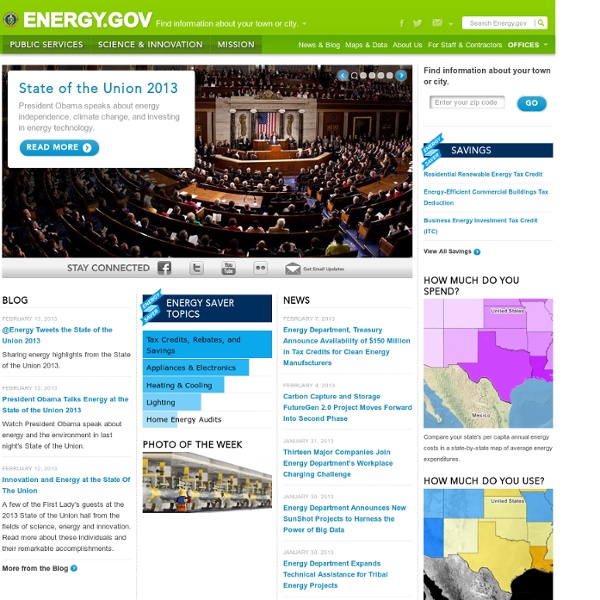



Alexandria, VA Registered user features are being discontinued. Please click here for more info. Top Alexandria Cameras[?] I-395 @ 14th St Bridge I-95 s/o Rt -234 I-95 @ Prince William Parkway I-95 @ Mine Rd I-95 n/o Triangle I-95 @ Weigh Station I-95 @ Route 1 Woodbridge South I-95 @ Exit 126 MM 126.7 I-66 @ Lynn Street I-66 @ Scott St Electricity Electricity is the connective tissue of the information age, powering everything from smartphones to giant data centers and enabling virtually every transaction in daily life. Electricity is the lifeblood of both buildings (72 percent) and industry (28 percent). The U.S. electricity system is the greatest engineering achievement of the 20th century. Yet while the information economy creates new value by innovating to meet diverse customer preferences, the electricity system remains slow to respond and reluctant to adapt. To meet market expectations, capture new technological opportunities, and manage risks, the electricity industry must accelerate its own change toward speed of the information technology (IT) that is pervading society. Today’s electricity system faces a perfect storm of deferred major infrastructure investments, financial constraints, stagnating or falling demand, a fundamentally altered competitive landscape, and evolving environmental and health priorities.
Addx Corporation Electric utility An electric utility is an electric power company (often a public utility) that engages in the generation, transmission, and distribution of electricity for sale generally in a regulated market. The electrical utility industry is a major provider of energy in most countries. It is indispensable to factories, commercial establishments, homes, and even most recreational facilities. Electric utilities include investor owned, publicly owned, cooperatives, and nationalized entities. Electric utilities are facing increasing demands [1] according to Black & Veatch's annual utility survey, based on input from 700 utility participants, for 2011 the top-three concerns were aging infrastructure, reliability (no. 1 in 2010) and regulation (no. 2 in 2010). Organization[edit] Utility service territories are typically geographically distinct from one another. Tariff structure[edit] Utilities typically employ a number of tariffs. Power transactions[edit] See also[edit] References[edit]
INIT New Utility Business Models | America’s Power Plan Utility and Regulatory Models for the Modern Era By Ronald Lehr, former Colorado Public Utilities Commissioner View the policy recommendations from New Utility Business Models.Download the executive summary [PDF].Download the full New Utility Business Models paper [PDF].View the version printed in Elsevier’s Electricity Journal. Related Resources: View the announcement about our paper on performance-based ratemaking.Download the full New Regulatory Models paper [PDF]. The Situation The U.S. electric power industry is changing fast. Under the current regulatory system, these market trends constitute a considerable threat to traditional utility business models. Much of the country still operates under this centralized vertically integrated monopoly model. In some parts of the country, new business models are already in effect. Unfortunately, some utilities are simply circling the wagons, trying to protect their revenues from the forces of consumer demand and technological innovation.
BushwickBK Associated Electric Cooperative | Locations » Thomas Hill AECI’s Thomas Hill Power Division is located in north-central Missouri just one hour from Columbia, Missouri, home of the Mizzou Tigers and three hours from both Kansas City and St. Louis. The location offers the benefits of small town living yet large metropolitan areas are within reach for a weekend get-away to shop or catch major league sports teams in action. The communities surrounding the power plant have much to offer including the comfort of country living where you can enjoy fishing, hunting, water activities, and other outdoor sports. The area has much to offer outdoor enthusiasts and still be within reach of quality health care and educational resources. Visitor Information Attractions Other helpful links for surrounding areas
Coop We know that submitting timely, accurate tax returns is a tremendous challenge for any business, whether you work out of your home or run a corporation. Yet it is a necessity. Many new and existing entrepreneurs are confused or nervous about filing their self-employment taxes correctly. Other entrepreneurs who have found success and wish to expand, often discover that almost every type of existing small business loan requires recent tax returns as part of the loan application. Not having tax returns means that these business owners either cannot grow, or must resort to high-priced credit cards or loan sharks to find working capital. Finding a trustworthy business tax preparer is difficult, but it is crucially important to ensure that the businesses we build in our communities are not lost due to noncompliance or to errors in tax reporting. To help you get this necessary work done, we offer self-employed individuals low-cost, individualized tax services at our 1474 Myrtle Ave location.
Despite More College Grads US Workforce Needs Even More Despite more college grads, U.S. workforce needs even more. The number of adult Americans who have earned college degrees has been increasing, but not fast enough to keep up with workforce demands, according to a report released Monday. At the current rate, employers in 2025 will need about 23 million more degree-holders than the nation's colleges and universities will have produced. "We are nowhere near at the pace that we need to be says," Jamie Merisotis, president of the non-profit Lumina Foundation, which released the report. "Look at it as an alarm, an urgent call to action." The foundation wants to increase the percentage of working-age Americans with high-quality degrees and credentials to 60% in 2025 — a goal similar to one set by President Obama in 2009. The Lumina Foundation report released Monday, based on 2010 Census data, found a positive overall trend: 38.3% of Americans ages 25 to 64 had at least an associate's degree in 2010, up from 38.1% in 2009 and 37.9% in 2008.